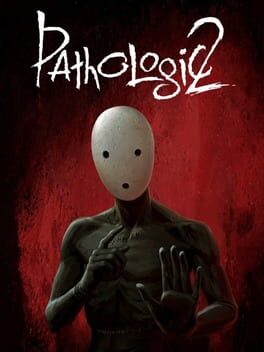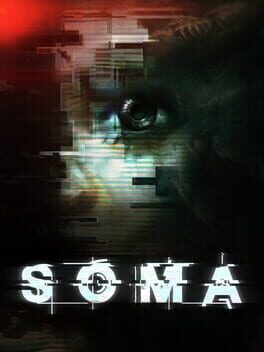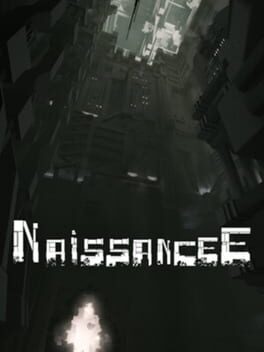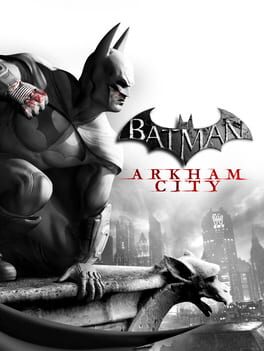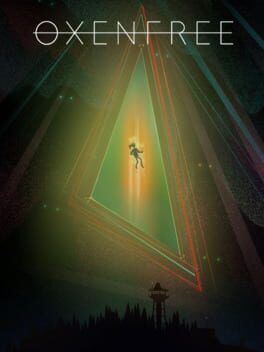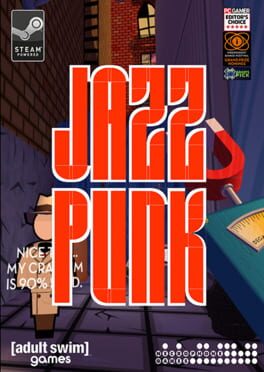jebhappy
2014
EUREKA!
There is not a single more groundbreaking nor impactful game release from the 2010s than P.T. The deceptively simplistic title is a radical deconstruction of narrative storytelling conventions and gameplay mechanics, perhaps even moreso than the original Silent Hill games. By only allowing the player to walk and zoom in through a first-person perspective, Hideo Kojima and his mysterious team are demanding them to look closer, to observe, to see what you’ve done, you monster.
Repressed memory causes a psychological influx, the mind turning against itself, and the ghosts of this machine are the grieving recollections of past sin. A rotting woman, a demented fetus in the bathroom sink, liquor bottles scattered all over the floor, eyes, eyes, so many eyes staring. Every layer of P.T. is drowning in metaphysical context, pushing the limits of what a storyteller can accomplish with environmental implications alone.
The game presents a horror story for the internet age, where solving puzzles prompts insight through communal investigation, with startlingly innovative results. By stressing the damage wrought by the nameless, faceless protagonist, whom which Kojima places the player directly within the shoes of, the game becomes a psychological assessment examining the remorseful individual’s longing for recompense and redemption.
But P.T. denies forgiveness; and with each venture through its now-iconic, dreaded hallway, this purgatorial nightmare draws closer and closer to a reality that implicates mindful immorality. The future of gaming has never seemed so bright nor alarming.
There is not a single more groundbreaking nor impactful game release from the 2010s than P.T. The deceptively simplistic title is a radical deconstruction of narrative storytelling conventions and gameplay mechanics, perhaps even moreso than the original Silent Hill games. By only allowing the player to walk and zoom in through a first-person perspective, Hideo Kojima and his mysterious team are demanding them to look closer, to observe, to see what you’ve done, you monster.
Repressed memory causes a psychological influx, the mind turning against itself, and the ghosts of this machine are the grieving recollections of past sin. A rotting woman, a demented fetus in the bathroom sink, liquor bottles scattered all over the floor, eyes, eyes, so many eyes staring. Every layer of P.T. is drowning in metaphysical context, pushing the limits of what a storyteller can accomplish with environmental implications alone.
The game presents a horror story for the internet age, where solving puzzles prompts insight through communal investigation, with startlingly innovative results. By stressing the damage wrought by the nameless, faceless protagonist, whom which Kojima places the player directly within the shoes of, the game becomes a psychological assessment examining the remorseful individual’s longing for recompense and redemption.
But P.T. denies forgiveness; and with each venture through its now-iconic, dreaded hallway, this purgatorial nightmare draws closer and closer to a reality that implicates mindful immorality. The future of gaming has never seemed so bright nor alarming.
2016
EUREKA!
The tapes are falling apart. Kitty Horrorshow’s gorgeous masterwork is an exceedingly-realised exercise in metaphorical horror. The interiors of a suburban home become a nightmarish realm akin to a human body, complete with a brain, arms, legs, intestines, even a voice. Horrorshow dutifully considers the sentience of a household, redefining the term ‘haunted house’ as seemingly-effortlessly as she deconstructs typical PC gaming conventions.
VHS horror is the prime motivation behind Anatomy’s dire pacing, the deterioration of a recorded tape reflecting an aging human body’s own gradual decay, and each time the game is rebooted one can feel the cracks in the walls ripping ever so further and further apart. The game’s finest moment recalls a collective fear of the unknown, the notion that our most comfortable surroundings have the ability to suddenly turn on us. The dark basement is the abyss down into which one does not stare, but that which stares into them.
The tapes are falling apart. Kitty Horrorshow’s gorgeous masterwork is an exceedingly-realised exercise in metaphorical horror. The interiors of a suburban home become a nightmarish realm akin to a human body, complete with a brain, arms, legs, intestines, even a voice. Horrorshow dutifully considers the sentience of a household, redefining the term ‘haunted house’ as seemingly-effortlessly as she deconstructs typical PC gaming conventions.
VHS horror is the prime motivation behind Anatomy’s dire pacing, the deterioration of a recorded tape reflecting an aging human body’s own gradual decay, and each time the game is rebooted one can feel the cracks in the walls ripping ever so further and further apart. The game’s finest moment recalls a collective fear of the unknown, the notion that our most comfortable surroundings have the ability to suddenly turn on us. The dark basement is the abyss down into which one does not stare, but that which stares into them.
2019
"Reality and fiction walk an incredibly thin line throughout Pathologic 2. There is a constant sense of self-awareness which cuts through the provocative writing. Some may call it “meta,” but the game doesn’t temper its audience with discussions regarding our relationship with artificiality, which modern day indie titles so often seem hung up on. Pathologic 2 is obsessed with fiction, with perusing our collective confusion within an ever-increasingly unstable period of worldwide disorder."
You can read my review over at Project Icarus Gaming:
https://pig.gg/an-ode-to-pathologic-2-the-best-game-of-2019/
You can read my review over at Project Icarus Gaming:
https://pig.gg/an-ode-to-pathologic-2-the-best-game-of-2019/
EUREKA!
It is of astonishing import that Sluggish Morss refuses to satisfy its audience with any form of linearity. Even as the player finds their barely tangible entity passing through corridors towards what is an assumed form of progression, time remains delicate, as promised. Puzzles solve themselves for you, robotic voices dissipate any minute essence of humanity, Beyonce is given a mechanical tribute -- in the game’s most brazenly comical moment, no doubt.
Yet through it all, Jack King-Spooner’s remarkable release steps beyond the boundaries of what constitutes a traditional “game.” Is it even a game? The title more serves as an examination of human control, or rather its lack of definition. Whereas Playdead’s INSIDE forces players down a strict path, poetically contradicting its three-dimensional design, Sluggish Morss paints a wrecked, immaterial canvas of vibrant polygons and distorted images.
The future is now is the past is forever; time is ripping apart at the seams; delicate, indeed. A galaxy’s history itself is vividly assembled into wicked collages, prompting many questions from its numerous, nameless individuals who ethereally wander the halls of this cavernous ship (a visually stunning evocation of ‘ghosts in the machine’). But one remains steadfast in its earnest unattainability: Where do we go from here?
In a cyclical sort of irony, the id has raced backwards into the future to contaminate and dissolve centuries of progress; it has all been written in the numbers. A mathematical philosophy governs the game’s prime scenario, in which everything boils down to a predictable science. Emotion is erased, of course, without room for moral inquiry, as in the case of NieR: Automata.
And perhaps this is what makes Sluggish Morss the most provocative philosophical release of the 2010s. It is the very lack of a determined philosophy which prompts such a fascinating and haunting portrayal of human development. The game illustrates a damned future for mankind through the notion that we are gradually erasing the very fabrics of our being one century at a time, and the end lies in an eternity which looks like data exploding off a screen.
It is of astonishing import that Sluggish Morss refuses to satisfy its audience with any form of linearity. Even as the player finds their barely tangible entity passing through corridors towards what is an assumed form of progression, time remains delicate, as promised. Puzzles solve themselves for you, robotic voices dissipate any minute essence of humanity, Beyonce is given a mechanical tribute -- in the game’s most brazenly comical moment, no doubt.
Yet through it all, Jack King-Spooner’s remarkable release steps beyond the boundaries of what constitutes a traditional “game.” Is it even a game? The title more serves as an examination of human control, or rather its lack of definition. Whereas Playdead’s INSIDE forces players down a strict path, poetically contradicting its three-dimensional design, Sluggish Morss paints a wrecked, immaterial canvas of vibrant polygons and distorted images.
The future is now is the past is forever; time is ripping apart at the seams; delicate, indeed. A galaxy’s history itself is vividly assembled into wicked collages, prompting many questions from its numerous, nameless individuals who ethereally wander the halls of this cavernous ship (a visually stunning evocation of ‘ghosts in the machine’). But one remains steadfast in its earnest unattainability: Where do we go from here?
In a cyclical sort of irony, the id has raced backwards into the future to contaminate and dissolve centuries of progress; it has all been written in the numbers. A mathematical philosophy governs the game’s prime scenario, in which everything boils down to a predictable science. Emotion is erased, of course, without room for moral inquiry, as in the case of NieR: Automata.
And perhaps this is what makes Sluggish Morss the most provocative philosophical release of the 2010s. It is the very lack of a determined philosophy which prompts such a fascinating and haunting portrayal of human development. The game illustrates a damned future for mankind through the notion that we are gradually erasing the very fabrics of our being one century at a time, and the end lies in an eternity which looks like data exploding off a screen.
2015
EUREKA!
A simulation is structured around creating a fissure which separates the simulated from the applicant experiencing it. The ghost in the machine is a figment desperately seeking its own form of identity separate from the simulation governing its existence. SOMA‘s greatest achievement is the way in which the developers at Frictional Games utilize their chosen medium to effectively simulate a very human story, within the contexts of a virtual constructed universe.
Simon Jarret gradually peels away at his replicated flesh throughout, transforming both physically and mentally as he slowly comes to grips with his counterfeit existence. His voice and backstory present a distinct divorce between protagonist and player, establishing SOMA as a mortal simulation that questions the validity of Simon’s own humanity.
Players begin in a recognizable apartment, then follow along with the protagonist as he volunteers for a radical scientific project, eventually awakening in a dark, deteriorating undersea laboratory where the dead roam the halls as hulking robotic replicants. The proceeding venture eagerly and dreadfully philosophizes on mankind’s limitations, and obsession with technological development, sending its audience to the very depths of the sea to wrangle with the ghosts of a ruptured Earth’s past.
Equal parts horrific and relievingly lighthearted, the ambitious storytelling presents a profound response to the modern generational anxiety surrounding social media manipulation. SOMA revels in its bleak perspective on the simulation as a deceptive and defective mode of personification, right down to its unforgettable toincoss finale, which brilliantly doubts the impact of every step you’ve taken to reach it.
A simulation is structured around creating a fissure which separates the simulated from the applicant experiencing it. The ghost in the machine is a figment desperately seeking its own form of identity separate from the simulation governing its existence. SOMA‘s greatest achievement is the way in which the developers at Frictional Games utilize their chosen medium to effectively simulate a very human story, within the contexts of a virtual constructed universe.
Simon Jarret gradually peels away at his replicated flesh throughout, transforming both physically and mentally as he slowly comes to grips with his counterfeit existence. His voice and backstory present a distinct divorce between protagonist and player, establishing SOMA as a mortal simulation that questions the validity of Simon’s own humanity.
Players begin in a recognizable apartment, then follow along with the protagonist as he volunteers for a radical scientific project, eventually awakening in a dark, deteriorating undersea laboratory where the dead roam the halls as hulking robotic replicants. The proceeding venture eagerly and dreadfully philosophizes on mankind’s limitations, and obsession with technological development, sending its audience to the very depths of the sea to wrangle with the ghosts of a ruptured Earth’s past.
Equal parts horrific and relievingly lighthearted, the ambitious storytelling presents a profound response to the modern generational anxiety surrounding social media manipulation. SOMA revels in its bleak perspective on the simulation as a deceptive and defective mode of personification, right down to its unforgettable toincoss finale, which brilliantly doubts the impact of every step you’ve taken to reach it.
2011
Portal 2 is not so much an exercise in worldbuilding as it is an exercise in establishing mood, a masterwork indulging in tonal variance. Mammoth sized test chambers confine our protagonist, Chell, within a dizzying gauntlet where her human intuition is ceaselessly tested by the ever-evolving AI, GLaDOS. The great shall outlive the small, and as evidenced by the game's winding, brilliantly-paced narrative, Humanity is entirely defined by the notion of achieving superiority. While the original Portal serves as a case study on the sinister after effects of seeking natural evolution through technological means; this thoroughly influential sequel operatically develops its predecessor's case, both dauntingly and hilariously, all while focusing on an inherent human deficiency regarding a desire to play God.
Most impressively, Valve have conjured a new brand of iconicism, painting every room, every corridor with the same brilliant and memorable aura as the last, kickstarting the decade's walking sim revolution. The developers necessarily convince their audience of Aperture's impossibly grand architecture, plus dish out plenty of material to finally outshine a certain fabrication involving cake. Forgive the lacking focus on puzzle design and gameplay situations, and get lost within the decaying passages where pursuing success sparks musical harmonies, and Life refuses to succumb to rot.
Portal 2 is an historical simulation, a sort of 'trip down memory lane.' Its methodical level design, in which the player eventually literally mingles amongst the buried past, proves that the more we push forward for the future of mankind, the more blinded and sickened by power we become. Strip away the convincing subtext, and what remains is a masterwork in fluidity, a makeup of genre-defying compositions, a transformative playspace with a slew of innovative experimental gel gimmicks, and one of the funniest games ever made, complete with voltaic potatoes, caroling turrets, combustible lemons, and the biggest moron ever built.
Most impressively, Valve have conjured a new brand of iconicism, painting every room, every corridor with the same brilliant and memorable aura as the last, kickstarting the decade's walking sim revolution. The developers necessarily convince their audience of Aperture's impossibly grand architecture, plus dish out plenty of material to finally outshine a certain fabrication involving cake. Forgive the lacking focus on puzzle design and gameplay situations, and get lost within the decaying passages where pursuing success sparks musical harmonies, and Life refuses to succumb to rot.
Portal 2 is an historical simulation, a sort of 'trip down memory lane.' Its methodical level design, in which the player eventually literally mingles amongst the buried past, proves that the more we push forward for the future of mankind, the more blinded and sickened by power we become. Strip away the convincing subtext, and what remains is a masterwork in fluidity, a makeup of genre-defying compositions, a transformative playspace with a slew of innovative experimental gel gimmicks, and one of the funniest games ever made, complete with voltaic potatoes, caroling turrets, combustible lemons, and the biggest moron ever built.
2014
"Lisa is lost. The first words etched across the screen, over a blank wall I wake up to after falling down a well. Something is chasing me. I am lost. The wall is saturated in white, grey, and black. It is a fitting image to introduce the deliberate composition of the game’s landscapes. A game? No, this is an excavation. An historical journey dripping with metaphysical anxieties. This lone human entity (or assumedly so) pants and heaves and must control her breath as she frantically treks through the serpentine catacombs. Rather, I must control it for her. We are lost.
Labyrinthine cityscapes forged out of the sides of chasms. Endless staircases and enormous vacant rooms. Statues of unfolding geometric shapes standing tall like monuments in a commemorative plaza. These iconic constructions beguile and amaze ceaselessly throughout the prodigious venture. Architecture is used to extract a freeflowing sense of wonder from the game’s audience, ebullient and surging as the journey itself."
You can read my thoughts on NaissanceE over at Project Icarus Gaming:
https://pig.gg/geometric-isolationism-and-morbid-anxiety-in-naissancee/
Labyrinthine cityscapes forged out of the sides of chasms. Endless staircases and enormous vacant rooms. Statues of unfolding geometric shapes standing tall like monuments in a commemorative plaza. These iconic constructions beguile and amaze ceaselessly throughout the prodigious venture. Architecture is used to extract a freeflowing sense of wonder from the game’s audience, ebullient and surging as the journey itself."
You can read my thoughts on NaissanceE over at Project Icarus Gaming:
https://pig.gg/geometric-isolationism-and-morbid-anxiety-in-naissancee/
2017
EUREKA!
A masterpiece of minimalistic design principles, utilizing them as a catalyst for player character development, Cheap Golf revels in its wholly unique scenario. The game itself exists as a sort of imperceptible AI, though it is not a typical HAL/GLaDOS clone; instead of questioning subservience to human doctrine, this AI just wants to learn how to jive with the kids these days. Oh, and it wants you to call it SUSAN.
By reinterpreting standard golf mechanics into a two-dimensional artifice, the computer screen becomes a blank slate for SUSAN to develop its (her?) own intelligence; the player and the game share a symbiotic relationship in which the two feed off of each other’s evolving minds. Oftentimes, real links to websites will interrupt the monotonous trials to offer a glimpse into the future of human-machine communication. Ultimately the game serves as a reminder of the influence both that we have on technology, and technology has on mankind, portrayed through a familiar puzzle game conceit, which forges an often hysterical narrative of a quite lovable AI interface. Stare into the screen and find that the screen shall indeed stare back.
A masterpiece of minimalistic design principles, utilizing them as a catalyst for player character development, Cheap Golf revels in its wholly unique scenario. The game itself exists as a sort of imperceptible AI, though it is not a typical HAL/GLaDOS clone; instead of questioning subservience to human doctrine, this AI just wants to learn how to jive with the kids these days. Oh, and it wants you to call it SUSAN.
By reinterpreting standard golf mechanics into a two-dimensional artifice, the computer screen becomes a blank slate for SUSAN to develop its (her?) own intelligence; the player and the game share a symbiotic relationship in which the two feed off of each other’s evolving minds. Oftentimes, real links to websites will interrupt the monotonous trials to offer a glimpse into the future of human-machine communication. Ultimately the game serves as a reminder of the influence both that we have on technology, and technology has on mankind, portrayed through a familiar puzzle game conceit, which forges an often hysterical narrative of a quite lovable AI interface. Stare into the screen and find that the screen shall indeed stare back.
2011
Arkham City itself is like a wonderful portrait brought to Life, a shadowy kingdom oozing corruption and crime. Neon lit billboards and vibrant building complexes draw the eye like grand focal points; the streets are littered with blackness and grime.
The citywide prison serves as a representation of impoverishment grown widespread, sequestered away from the upper class in a cold, menacing world to let its criminal inhabitants run loose. A playplace for hoodlums, a sort of purgatory intended to punish but instead starves, feeding off of their violent, capricious energy while they desperately fight for survival.
In the middle of it all stands the iconic Batman, caught between two ticking clocks counting down to certain doom, one involving the mysterious Dr. Strange's diabolical plot, the other his own confrontation with mortality, sickeningly devised by his arch nemesis, the Joker. It's a ridiculous and borderline asinine plot (not to mention its sexist portrayals of beloved female characters), which nonetheless oozes charm and hearkens back to old-school comic book escapism.
The in-game map is littered with objectives to complete, most of the side content considerably bold in their encapsulation of civic duty. Murder, disappearances, haunting figures, and yes, riddles; the dark knight is swamped with work to be done during this endless winter evening. Or rather, you, the player are swamped, with numerous responsibilities, all while under the constant threat of impending catastrophe.
Much talk of the entire Arkham franchise eventually devolves into applauding how each entry “makes you feel like Batman,” which is certainly true. But aside from the always-satisfying, balletic combat, with its ever-increasing challenge throughout the linear narrative, and the gadgetry, and Kevin Conroy's legendary performance, and the vast array of characters and references, hidden or otherwise; aside from these cleverly devised elements, it is the game's demanding strain of responsibility which most captures the impression of playing the Bat. And, alongside the genuinely wondrous artistic detail placed into every fabric of the world's gothic composition, it is through this dedicated design towards duty-driven storytelling which allows Arkham City to inspire awe at nearly every turn.
The citywide prison serves as a representation of impoverishment grown widespread, sequestered away from the upper class in a cold, menacing world to let its criminal inhabitants run loose. A playplace for hoodlums, a sort of purgatory intended to punish but instead starves, feeding off of their violent, capricious energy while they desperately fight for survival.
In the middle of it all stands the iconic Batman, caught between two ticking clocks counting down to certain doom, one involving the mysterious Dr. Strange's diabolical plot, the other his own confrontation with mortality, sickeningly devised by his arch nemesis, the Joker. It's a ridiculous and borderline asinine plot (not to mention its sexist portrayals of beloved female characters), which nonetheless oozes charm and hearkens back to old-school comic book escapism.
The in-game map is littered with objectives to complete, most of the side content considerably bold in their encapsulation of civic duty. Murder, disappearances, haunting figures, and yes, riddles; the dark knight is swamped with work to be done during this endless winter evening. Or rather, you, the player are swamped, with numerous responsibilities, all while under the constant threat of impending catastrophe.
Much talk of the entire Arkham franchise eventually devolves into applauding how each entry “makes you feel like Batman,” which is certainly true. But aside from the always-satisfying, balletic combat, with its ever-increasing challenge throughout the linear narrative, and the gadgetry, and Kevin Conroy's legendary performance, and the vast array of characters and references, hidden or otherwise; aside from these cleverly devised elements, it is the game's demanding strain of responsibility which most captures the impression of playing the Bat. And, alongside the genuinely wondrous artistic detail placed into every fabric of the world's gothic composition, it is through this dedicated design towards duty-driven storytelling which allows Arkham City to inspire awe at nearly every turn.
2015
Sylvio is a rare supernatural title which understands the significant connection between a place and the spirits which haunt it. A devilishly unique FPS, developer, Stroboskop’s paranormal investigation sim meshes amateur entrepreneurial work with ASMR-inspired terrors, transforming repetitive tasks into a sort of ritual for communicating with the rather restless dead. Scouring tapes — rewinding, playing them backwards, slowing down or speeding them up — is an enthralling and fittingly unnerving experience all on its own. However, perhaps what is most frightening is Sylvio’s assurance that these figments seem tied to the locations where they died, as though trapped by the circumstances of their deaths in an eternal fog of dissatisfaction. Death, as Sylvio appears to argue, is never as peaceful as we hope it to be.
2013
EUREKA!
As much as this often frightening reboot feels constrained by its own series heritage, Tomb Raider lingers in the mind like a post traumatic encounter with death. Not just one death, but numerous visceral incidents where the body of the young Lara Croft is beaten, bruised, and expunged by the inhabitants (both living and ecological) of the aggressive island encasing her. Nearly every action taken -- scaling steep rockslides, forcing open doors and valves, investigating artifacts, skinning wildlife, hunting with bow and arrow -- emphasizes a burgeoning woman coming to grips with the menaces of culture as she explores and comes to recognize alarming truths.
A forested coming of age tale not unlike Gary Paulsen's Hatchet, sprinkled with the claustrophobic terrors of The Descent, and enveloped in Uncharted-inspired gameplay mechanics (with actual instated narrative accordance); Tomb Raider is overall a familiar product which often falls into typical AAA trappings. However, this wartorn experience investigates the fabrication of a brutal, apathetic soldier, a trepidatious tragedy made suitably empathetic by applying the lead's psychological journey through violent interactivity. In other words, Kill or be killed. "I can do this," Lara remarks early on, muttering affirmations to herself for the sake of survival, unaware of the monster she will later, inevitably become.
As the excessively gruesome scenarios unfold throughout the game, her determination to live eventually becomes an eagerness to conquer, as sickening as the incalculable death scenes prompted with every Game Over. A thrilling and dizzying ascent up an antenna tower to signal to civilization affirms the final process of her evolution: a huntress emerges bloodied and vindictive, callous towards those threatening her and fueled by an internal perseverance; she CAN do this. Supportive assurance becomes fact.
Indeed, every appalling casualty she suffers at the hands of the player's own failure wrecks the mind. Intentionally attempting to capture a debilitating and distressing audience reaction overall justifies the developers' brutal depictions, for it instills a similar determination within the player to push through hardships and ensure Lara's progress, no matter the human cost (her's or otherwise). A legitimate survival story as any other, flawed though it may be, thanks to forgettable archetypal characters and questionable scenarios; but nonetheless remarkably poignant and humanistic.
As much as this often frightening reboot feels constrained by its own series heritage, Tomb Raider lingers in the mind like a post traumatic encounter with death. Not just one death, but numerous visceral incidents where the body of the young Lara Croft is beaten, bruised, and expunged by the inhabitants (both living and ecological) of the aggressive island encasing her. Nearly every action taken -- scaling steep rockslides, forcing open doors and valves, investigating artifacts, skinning wildlife, hunting with bow and arrow -- emphasizes a burgeoning woman coming to grips with the menaces of culture as she explores and comes to recognize alarming truths.
A forested coming of age tale not unlike Gary Paulsen's Hatchet, sprinkled with the claustrophobic terrors of The Descent, and enveloped in Uncharted-inspired gameplay mechanics (with actual instated narrative accordance); Tomb Raider is overall a familiar product which often falls into typical AAA trappings. However, this wartorn experience investigates the fabrication of a brutal, apathetic soldier, a trepidatious tragedy made suitably empathetic by applying the lead's psychological journey through violent interactivity. In other words, Kill or be killed. "I can do this," Lara remarks early on, muttering affirmations to herself for the sake of survival, unaware of the monster she will later, inevitably become.
As the excessively gruesome scenarios unfold throughout the game, her determination to live eventually becomes an eagerness to conquer, as sickening as the incalculable death scenes prompted with every Game Over. A thrilling and dizzying ascent up an antenna tower to signal to civilization affirms the final process of her evolution: a huntress emerges bloodied and vindictive, callous towards those threatening her and fueled by an internal perseverance; she CAN do this. Supportive assurance becomes fact.
Indeed, every appalling casualty she suffers at the hands of the player's own failure wrecks the mind. Intentionally attempting to capture a debilitating and distressing audience reaction overall justifies the developers' brutal depictions, for it instills a similar determination within the player to push through hardships and ensure Lara's progress, no matter the human cost (her's or otherwise). A legitimate survival story as any other, flawed though it may be, thanks to forgettable archetypal characters and questionable scenarios; but nonetheless remarkably poignant and humanistic.
2016
EUREKA!
The illusion of control remains INSIDE’s most dedicated thematic irony. Video games often serve as a means of empowering the player, to escape a reality in which social structures define their every move. Playdead’s masterpiece profoundly constitutes the horrors of modern collective ignorance and hierarchical governance within the contexts of a side-scrolling puzzle game, most insidiously inferring that complete freedom means the surrender of Life itself. With each death, of which there are plenty, the player grows more and more weary of failure, serving as a reminder of the oppressive nature of the society from which they most certainly appear to be fleeing. The boy heaves and huffs as he so determinedly runs forward, down an ironically guided path, seeking some form of salvation. INSIDE’s most daring and cynical message seems to imply the impossibility of escape, a message that hauntingly reverberates throughout the entire game, right down to its gut-punching finale.
The illusion of control remains INSIDE’s most dedicated thematic irony. Video games often serve as a means of empowering the player, to escape a reality in which social structures define their every move. Playdead’s masterpiece profoundly constitutes the horrors of modern collective ignorance and hierarchical governance within the contexts of a side-scrolling puzzle game, most insidiously inferring that complete freedom means the surrender of Life itself. With each death, of which there are plenty, the player grows more and more weary of failure, serving as a reminder of the oppressive nature of the society from which they most certainly appear to be fleeing. The boy heaves and huffs as he so determinedly runs forward, down an ironically guided path, seeking some form of salvation. INSIDE’s most daring and cynical message seems to imply the impossibility of escape, a message that hauntingly reverberates throughout the entire game, right down to its gut-punching finale.
2016
EUREKA!
Not since Silent Hill 2 has grief been so thoughtfully illustrated within a game. In an era where cheap scares and lo-fi visuals plague the indie scene, Oxenfree excels at bridging the natural with the supernatural in the most sincere of storytelling methods. Character discussions flow with an organic pace, as heartbroken Alex meanders through the serpentine Edwards Island — a psychologically-rooted storybook limbo. The setting is the ideal representation of a woeful mind; denial syncs with time travel, voiceless longing is manifested within a crackling radio, a farewell embrace suggests the significance of companionship as a means of recovery. Oxenfree is a ghost story for the modern age, brimming with teenage wonder and remorseful connotation.
Not since Silent Hill 2 has grief been so thoughtfully illustrated within a game. In an era where cheap scares and lo-fi visuals plague the indie scene, Oxenfree excels at bridging the natural with the supernatural in the most sincere of storytelling methods. Character discussions flow with an organic pace, as heartbroken Alex meanders through the serpentine Edwards Island — a psychologically-rooted storybook limbo. The setting is the ideal representation of a woeful mind; denial syncs with time travel, voiceless longing is manifested within a crackling radio, a farewell embrace suggests the significance of companionship as a means of recovery. Oxenfree is a ghost story for the modern age, brimming with teenage wonder and remorseful connotation.
2015
Out of the darkness and into the white. There is no more prolific nor consistently creative a horror game developer working right now than Puppet Combo (AKA Ben), and Power Drill Massacre remains his bloodcurdling masterpiece. The psycho killer romp is at once a glorious recreation of 80s-B-movie-style tales, wonderfully toeing the line between sex and violence; death enacting a vivid climax, severing the escalating tension with a blood-soaked hunting knife. The game forces its voluntary guinea pigs to lose themselves in the labyrinthine halls of its abandoned factory. The unstoppable killer is let loose to roam unpredictably, recalling the randomised antagonist of Slender, only with a far more gruesome appetite. Death after death, the mounting screams and impenetrable gates closing the player in dutifully offer up a most unadorned challenge: Survive. Polygonal terror for the post-VHS era, slathered in an unmistakably modern demeanor.
2014
EUREKA!
Jazzpunk is a joyous, comedic ode to history: of games, of music, of film, of comedy, of civilization. Its sleuthy Cold War setting clashes with a cartoonish cyberpunk visage, which recalls Gravity Bone by way of the Marx Brothers. However, what could have been an exercise in political satire instead proves a masterpiece of subversive pop.
Whereas The Stanley Parable (a game similarly determined to think one step ahead of the player at every turn) proves a one-note, self-congratulatory farce, Jazzpunk is a walking sim which delights in the beauty of the mundane, exaggerating every trope and archetype it borrows from various media to create an endlessly delightful and unique vision. It is a game of juxtapositions; a genuinely artistic artifact which bridges the past and the future, music and movement, Lifelessness and stimulus. It's a game that strives to make the player laugh, whenever possible. A game where the player can't walk five feet without seeing another wild but clever gag. One's face is sure to hurt by the time the credits roll -- I wore a smile the whole way through.
Jazz and punk are two definitive American music genres, both at the forefront of their prospective eras; artists reconfigure the rules of songwriting in nearly antithetical ways. Jazz thrives on technical improvisation; punk strips a band down to its bare essentials and speaks in rudimentary rhymes. Jazzpunk, the game, proves sophisticated and joyously straightforward in its intentions, a true rarity within a medium gradually growing defined by technical and dramatic progress.
The basic spy caper plotting allows the developers at Necrophone Games to toss as many ideas into the pot as possible (notice the word 'pun' is right there in the title), filling each of the handful of maps with a bevy of content to peruse. The game is at its worst when relying on random, goofy dialogue interactions to pass the time; but at its best when spontaneous film references and inspired content transport the player through a simulated archive of historic video game influences. This is self-aware humor done right: not condescending, not bloated, but placed on an even playing field with the audience, in order to subsequently serve as a sort of commentary on the medium at large, whether intentional or not.
From "retiring" a group of "Realplicants," to aiding a gang of cyberpunk femmes in a bank robbery with a snot-gun; from entering the wrestling ring with a polygonal Randy Savage-clone, to entering cyberspace after being drugged and kidnapped by the self-proclaimed antagonists; Jazzpunk never stops surprising, all the way through to its reptilian, gastrointestinal finale, capping off a sequence in which the bad guy is thwarted by his own inflated ego (a fitting response to the Davey Wredens and Neil Druckmanns of the games industry). When times are tough, make 'em laugh.
Jazzpunk is a joyous, comedic ode to history: of games, of music, of film, of comedy, of civilization. Its sleuthy Cold War setting clashes with a cartoonish cyberpunk visage, which recalls Gravity Bone by way of the Marx Brothers. However, what could have been an exercise in political satire instead proves a masterpiece of subversive pop.
Whereas The Stanley Parable (a game similarly determined to think one step ahead of the player at every turn) proves a one-note, self-congratulatory farce, Jazzpunk is a walking sim which delights in the beauty of the mundane, exaggerating every trope and archetype it borrows from various media to create an endlessly delightful and unique vision. It is a game of juxtapositions; a genuinely artistic artifact which bridges the past and the future, music and movement, Lifelessness and stimulus. It's a game that strives to make the player laugh, whenever possible. A game where the player can't walk five feet without seeing another wild but clever gag. One's face is sure to hurt by the time the credits roll -- I wore a smile the whole way through.
Jazz and punk are two definitive American music genres, both at the forefront of their prospective eras; artists reconfigure the rules of songwriting in nearly antithetical ways. Jazz thrives on technical improvisation; punk strips a band down to its bare essentials and speaks in rudimentary rhymes. Jazzpunk, the game, proves sophisticated and joyously straightforward in its intentions, a true rarity within a medium gradually growing defined by technical and dramatic progress.
The basic spy caper plotting allows the developers at Necrophone Games to toss as many ideas into the pot as possible (notice the word 'pun' is right there in the title), filling each of the handful of maps with a bevy of content to peruse. The game is at its worst when relying on random, goofy dialogue interactions to pass the time; but at its best when spontaneous film references and inspired content transport the player through a simulated archive of historic video game influences. This is self-aware humor done right: not condescending, not bloated, but placed on an even playing field with the audience, in order to subsequently serve as a sort of commentary on the medium at large, whether intentional or not.
From "retiring" a group of "Realplicants," to aiding a gang of cyberpunk femmes in a bank robbery with a snot-gun; from entering the wrestling ring with a polygonal Randy Savage-clone, to entering cyberspace after being drugged and kidnapped by the self-proclaimed antagonists; Jazzpunk never stops surprising, all the way through to its reptilian, gastrointestinal finale, capping off a sequence in which the bad guy is thwarted by his own inflated ego (a fitting response to the Davey Wredens and Neil Druckmanns of the games industry). When times are tough, make 'em laugh.


